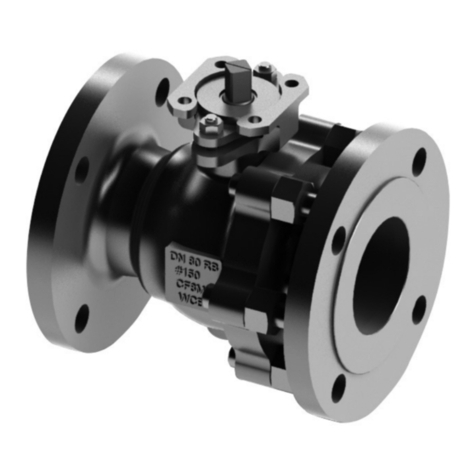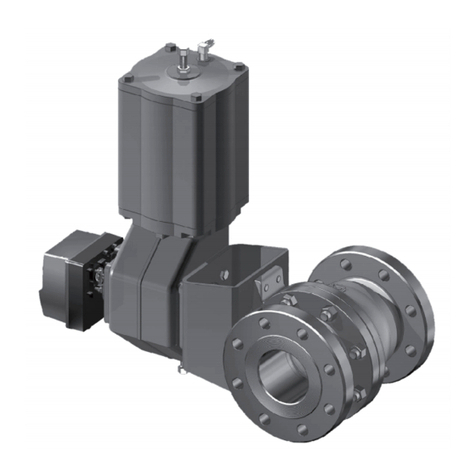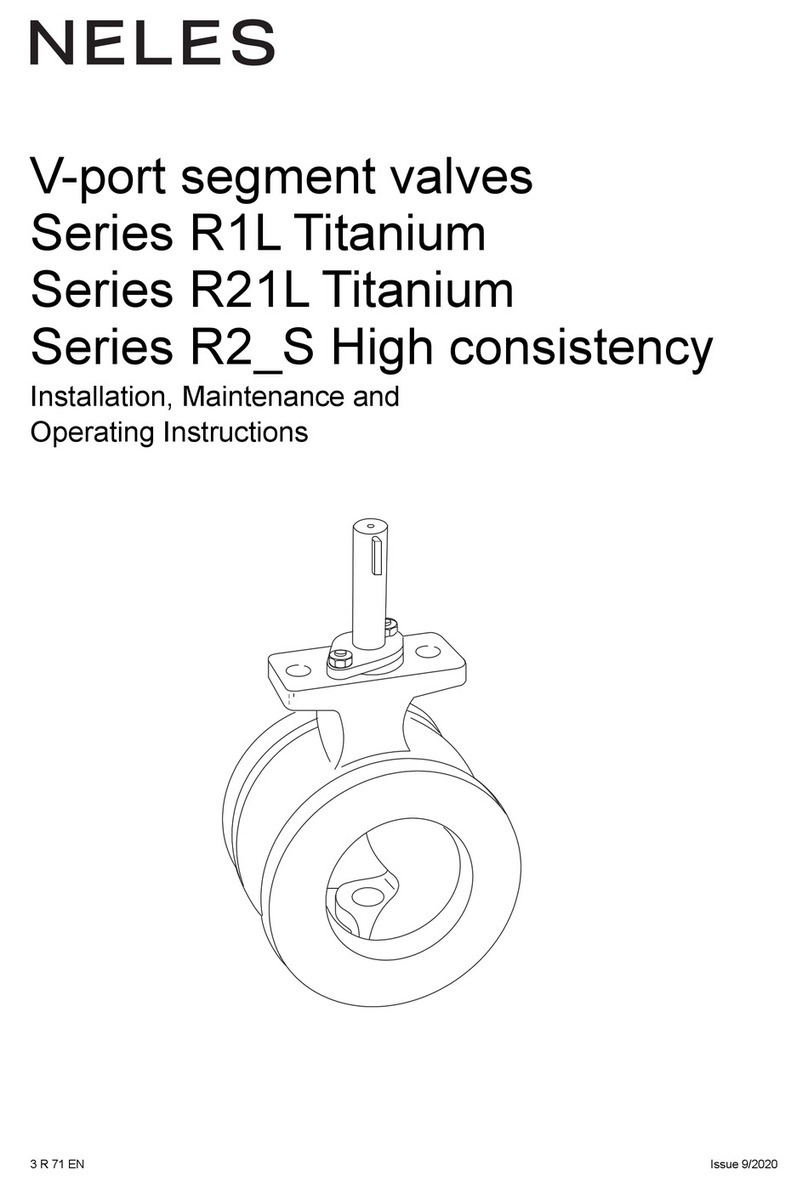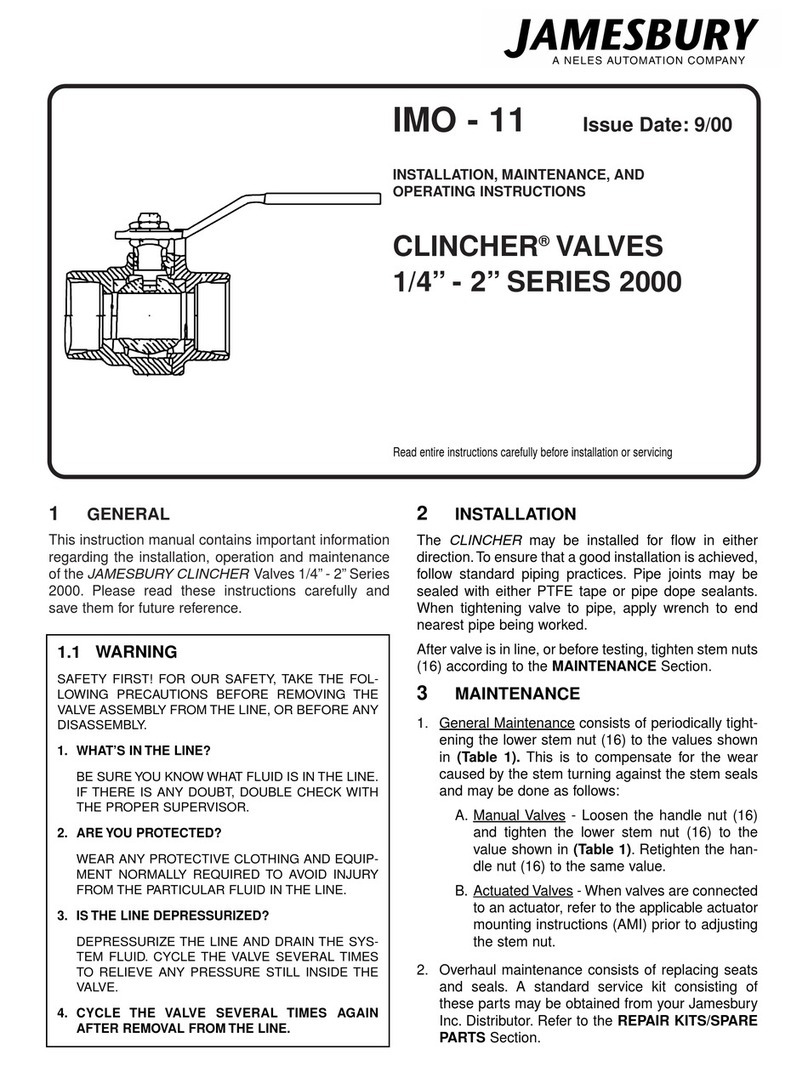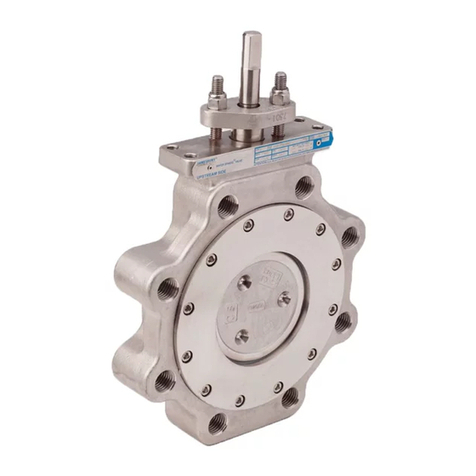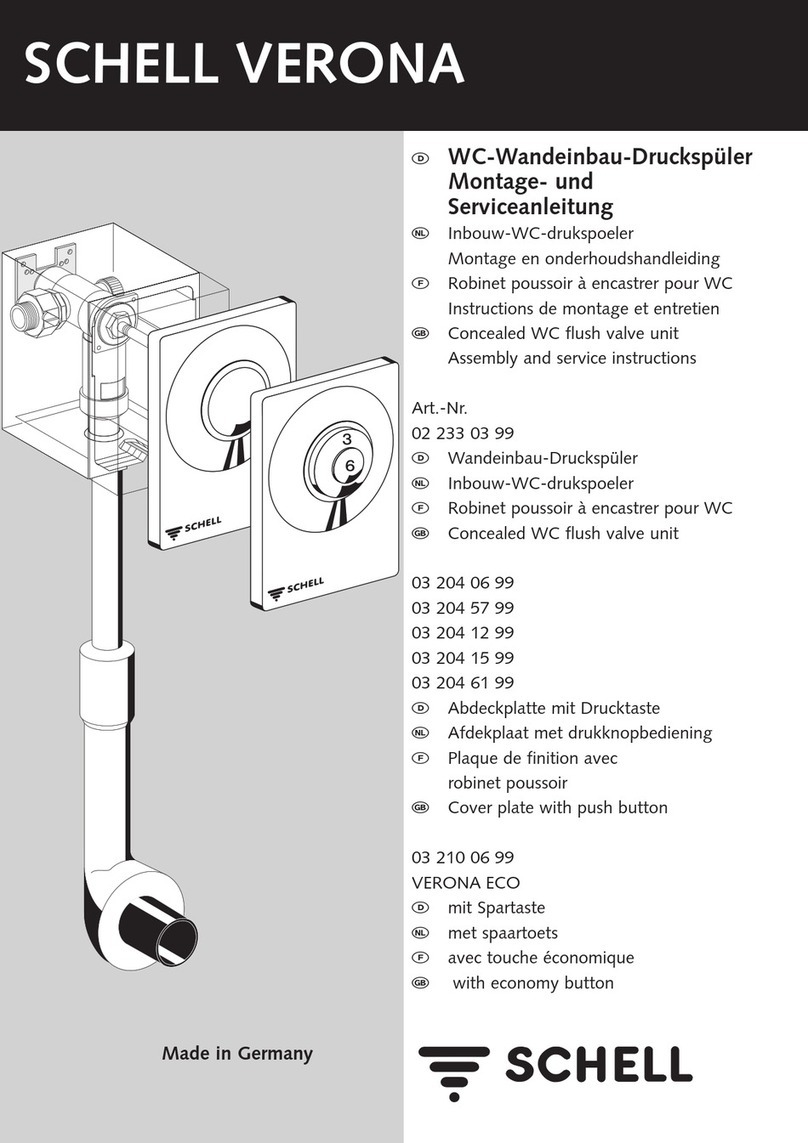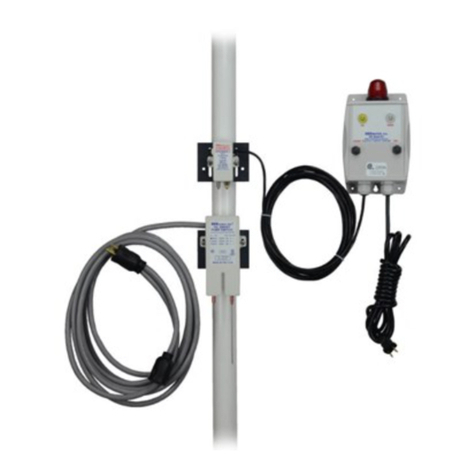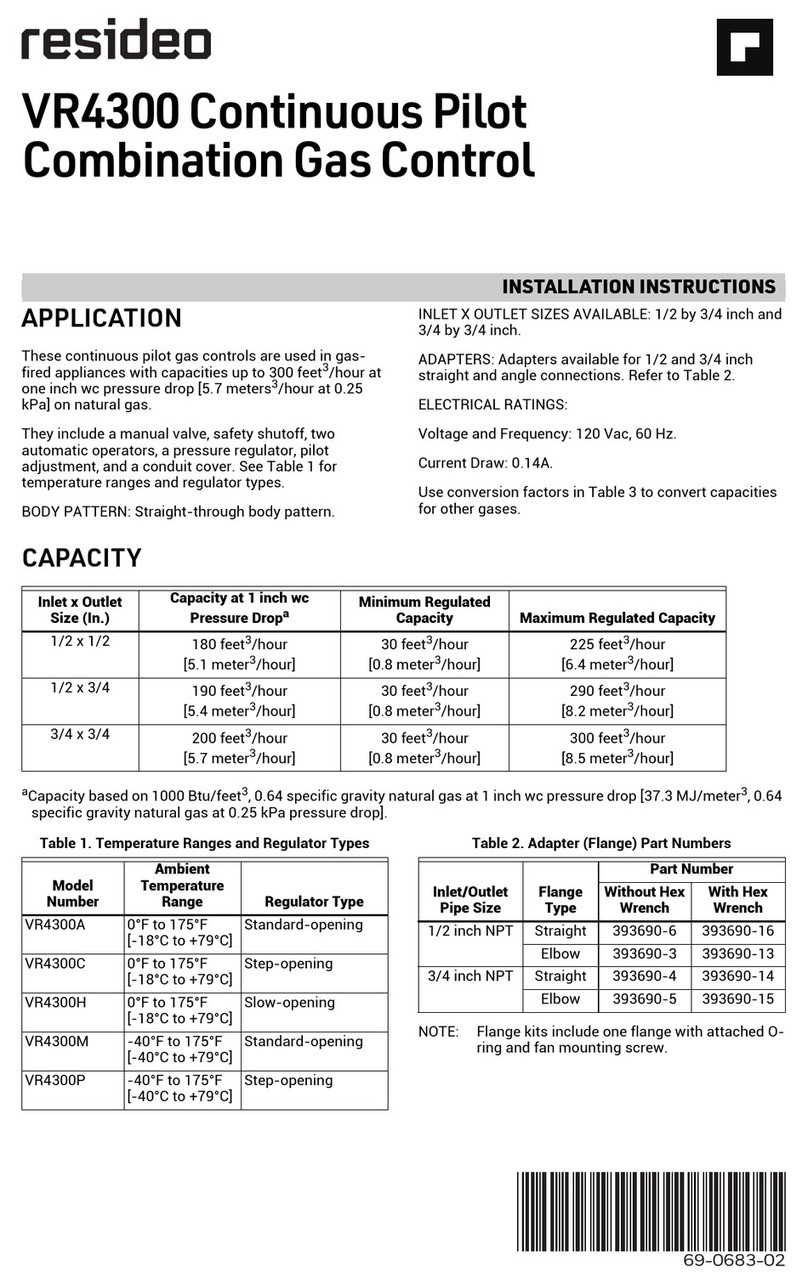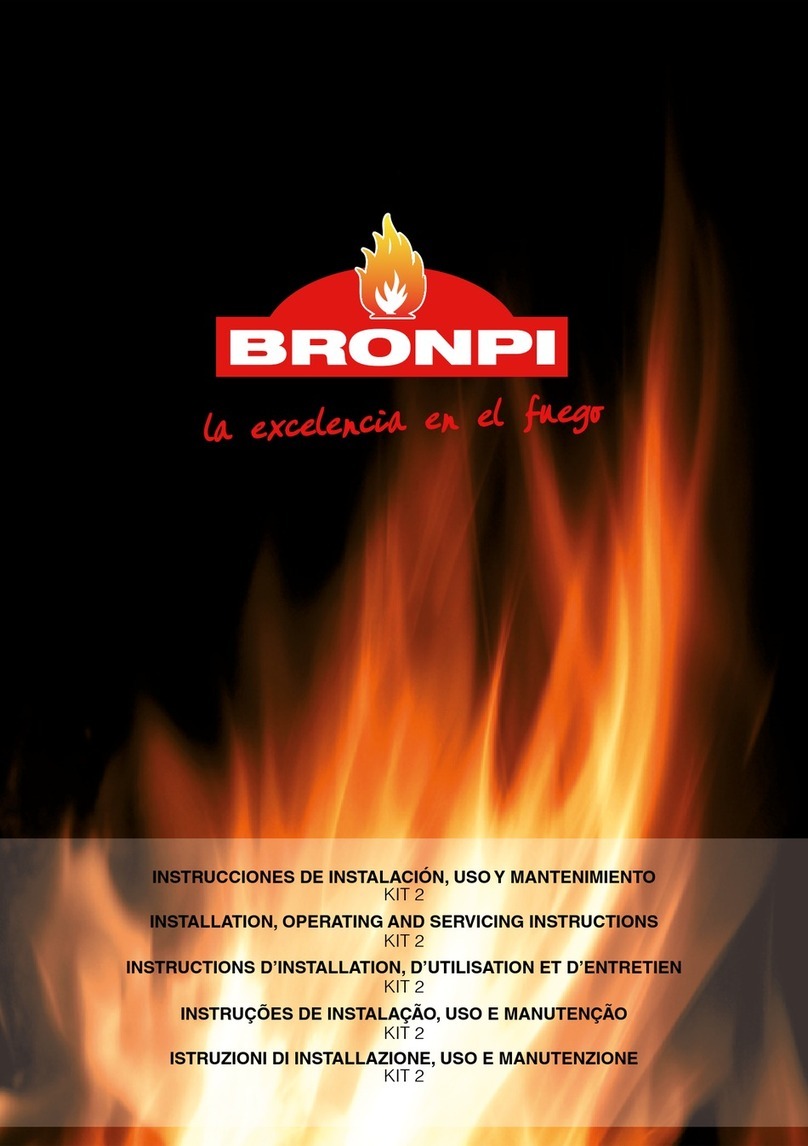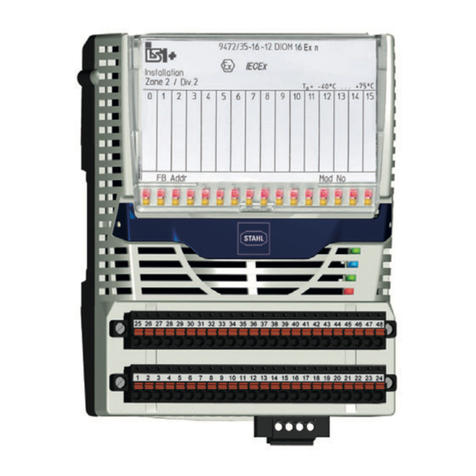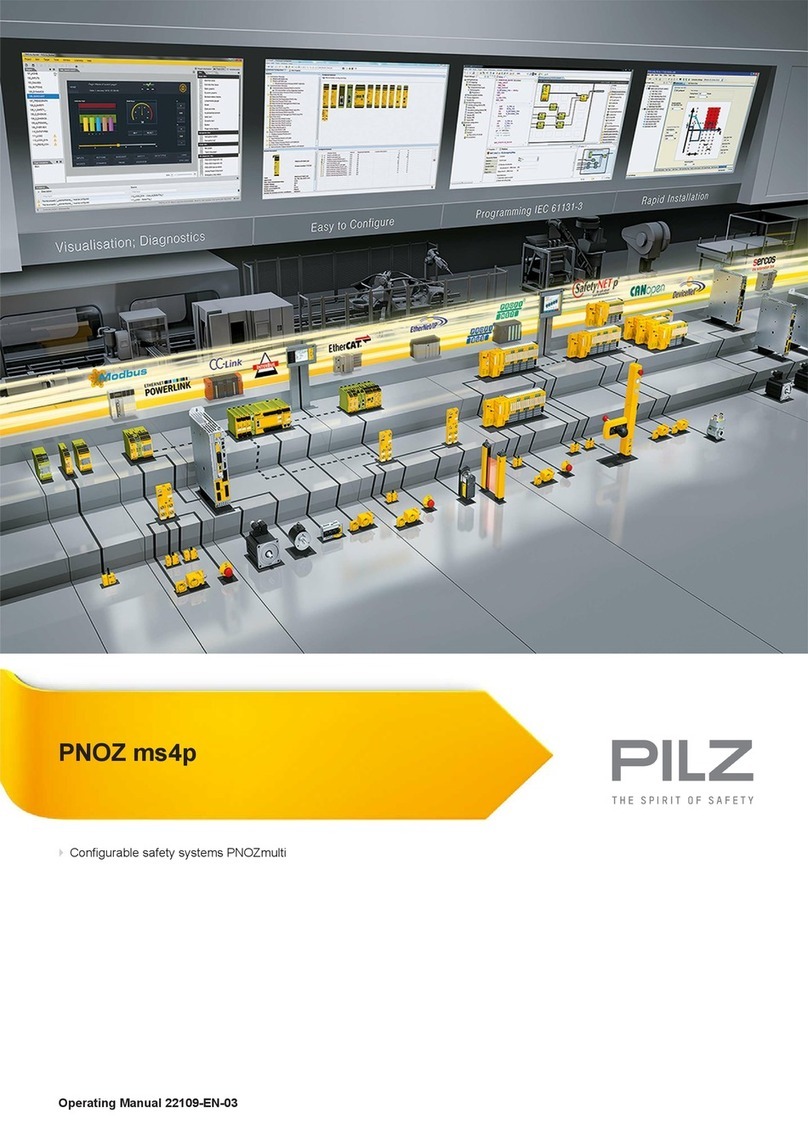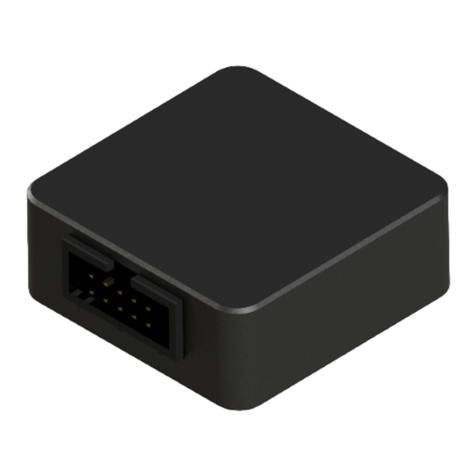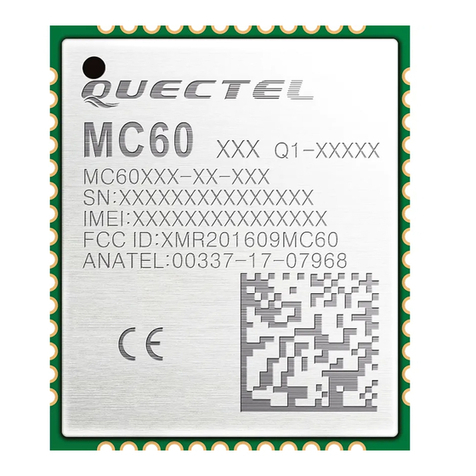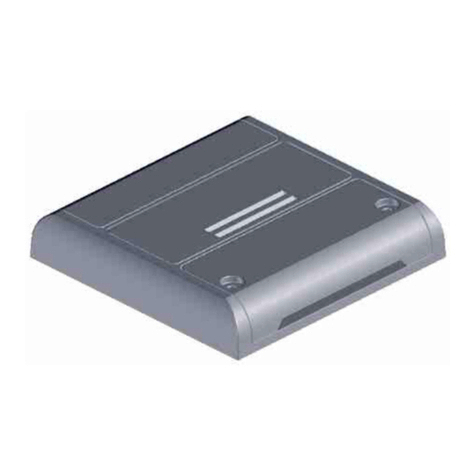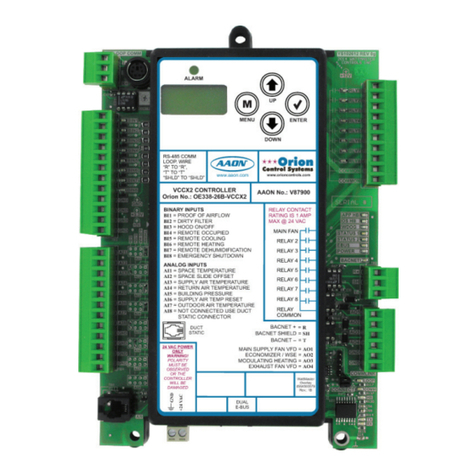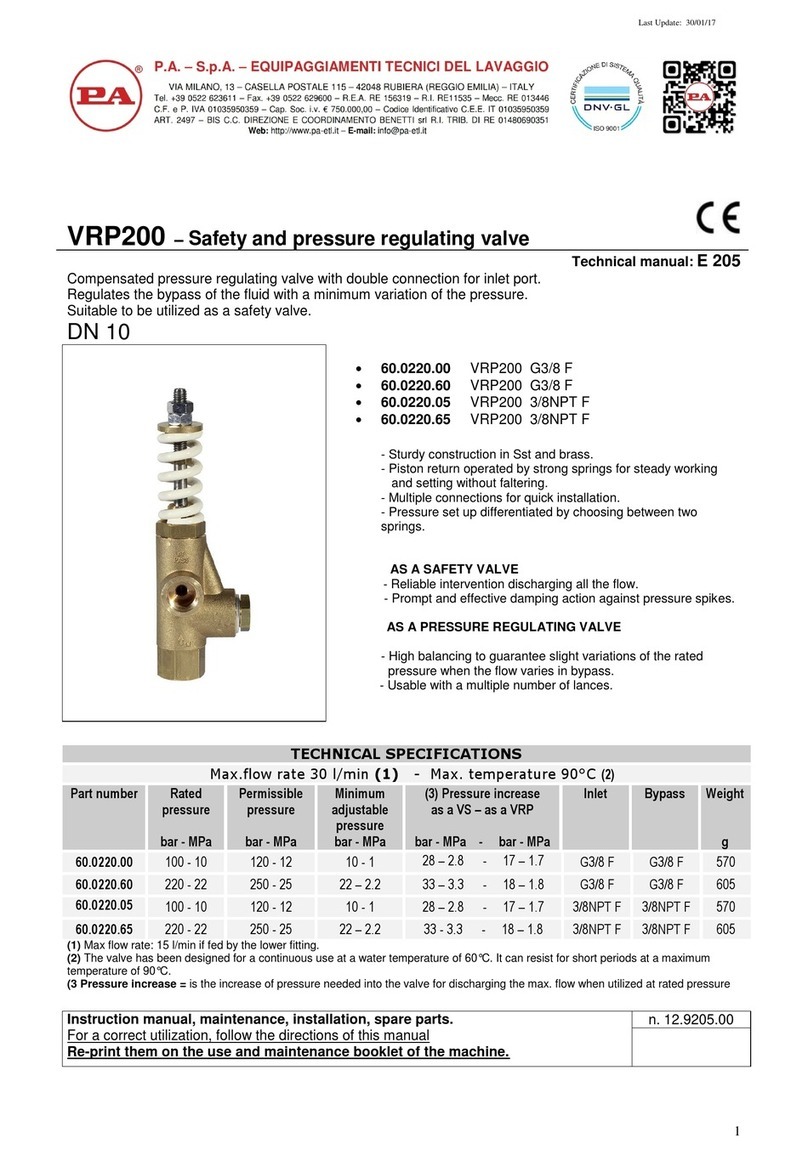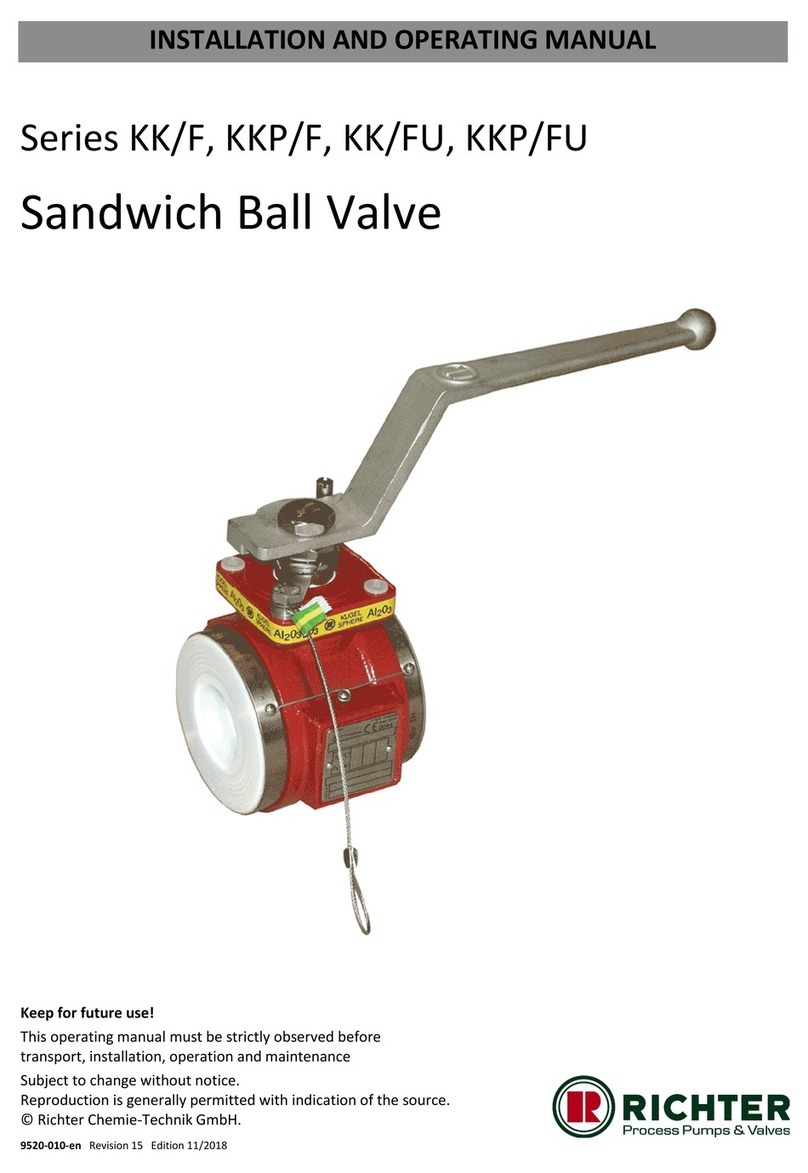
51PB270EN - 10/2020
Neles recommends inspecting valves at least every ve (5) years.
The inspection and maintenance frequency depend on the actual
application and process condition. Routine maintenance consists
of tightening the gland ange bolts (item 16 in exploded view)
periodically to compensate for stem seal wear.
Always loosen and tighten fasteners with the appropriate wrench to
avoid damaging the valve, handle, linkage, actuator, ttings or ats.
Overhaul maintenance consists of replacing seats and seals.
These parts may be obtained from Neles or an Authorized Neles
Distributor.
WARNING:
FOR YOUR SAFETY, IT IS IMPORTANT THE FOLLOWING
PRECAUTIONS BE TAKEN PRIOR TO REMOVAL OF
THE VALVE FROM THE PIPELINE OR BEFORE ANY
DISASSEMBLY:
1. BE SURE YOU KNOW WHAT FLUID IS IN THE
PIPELINE. IF THERE IS ANY DOUBT, DOUBLE-
CHECK WITH THE PROPER SUPERVISOR.
2. WEAR ANY PERSONAL PROTECTIVE EQUIPMENT
(PROTECTIVE CLOTHING OR EQUIPMENT)
REQUIRED WHEN WORKING WITH THE FLUID
INVOLVED.
3. DEPRESSURIZE THE PIPELINE AND CYCLE THE
VALVE AS FOLLOWS:
A. PLACE THE VALVE IN THE OPEN POSITION
AND DRAIN THE PIPELINE.
B. CYCLE THE VALVE TO RELIEVE RESIDUAL
PRESSURE IN THE BODY CAVITY BEFORE
REMOVAL FROM THE PIPELINE
C. AFTER REMOVAL AND BEFORE DISASSEMBLY,
CYCLE THE VALVE AGAIN SEVERAL TIMES.
4.2 ACTUATED VALVE
It is generally most convenient to detach the actuator and its auxiliary
devices before removing the valve from the pipeline. If the valve
package is small or if it is dicult to access, it may be more practical
to remove the entire assembly.
NOTE: To ensure proper reassembly, observe the position of the
actuator and positioner/limit switch with respect to the valve before
detaching the actuator.
WARNING:
ALWAYS DISCONNECT THE ACTUATOR FROM ITS POWER
SOURCE, PNEUMATIC, HYDRAULIC OR ELECTRICAL,
BEFORE ATTEMPTING TO REMOVE IT FROM THE VALVE!
WARNING:
DO NOT REMOVE A SPRING-RETURN ACTUATOR UNLESS
A STOP-SCREW IS CARRYING THE SPRING FORCE!
1. Detach the air supply, electrical supply, hydraulic supply and
control signal cables or pipes from their connectors.
2. Remove the actuator mounting bracket screws.
3. Lift the actuator straight up in line with the valve stem until
the connection between actuator drive and valve stem is
completely disengaged.
4. Place actuator in a safe location to avoid damage
or personal injury.
4.3 VALVE DISASSEMBLY
NOTE: It is good practice to replace all seats and seals any time a
valve is disassembled.
NOTE: Always use original OEM parts to make sure that the valve
functions properly.
Numbers in ( ) refer to items shown in the exploded view
1. Follow the steps in all the WARNING sections above before
performing any work on the valve.
2. Open and close the valve and leave in the closed position.
3. Remove the handle bolts (12), washers (10), handle (8).
4. Remove the C-ring (11), and then remove the stop plate (9).
5. Remove the gland bolts (14), washer (13), and then the gland (6).
6. Place the valve in the vertical position with the cap (2) end up.
7. Remove the body nuts (16) and remove the cap (2). Be careful
not to scratch the ball.
8. Remove the seat (5) from the body cap.
9. Close ball (3) by rotating stem (4) and lift ball (3) from body.
10. Remove the lower seat (4) from the valve body. Be careful not
to scratch the body sealing surface behind the seat.
11. Press the stem (4) from the top into valve body and carefully
remove it.
12. Remove the gland packing (7).
4.4 CHECKING PARTS
1. Clean all disassembled parts.
2. Check the stem (4) and ball (3) for damage. Pay particular
attention to the sealing areas.
3. Check all sealing and gasket surfaces on the body (1) and cap (2).
4. Replace any damaged parts.
5. Replace any fastener where the threads are damaged or have
been heated, stretched or corroded.
6. Replace any parts that have cracks, gouges or pits that will
aect sealing.
NOTE: When ordering spare parts, always include the following
information:
a. Valve type code as per technical bulletin and model
number from name plate,
b. If the valve is serialized - the serial number (stamped
on the valve body or name plate) or applicable
manufacturing order number,
4.5 VALVE ASSEMBLY
Numbers in ( ) refer to items shown in the exploded view.
It is advisable to replace seats and seals if complete disassembly
and reassembly become necessary.
1. Clean all valve components, if not previously done.
2. Inspect all components for damage before assembling the
valve. Look for damage to the sealing areas on the ball, stem,
and body.












